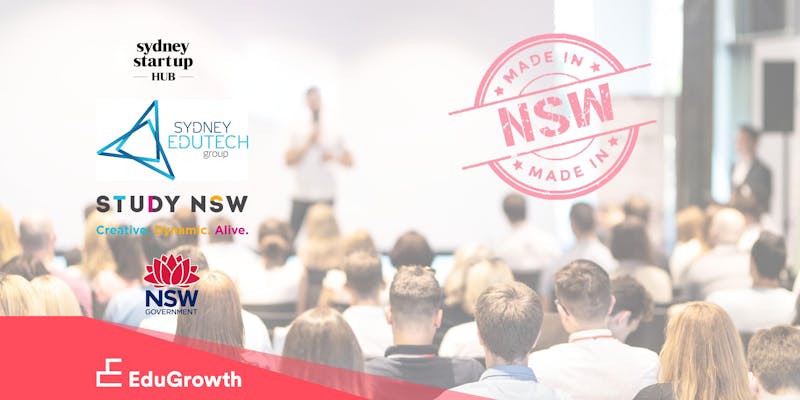I will be speaking on "
Mobile Learning with Micro-Credentials for International Students", at
EduTECH in Sydney, 4pm 6 June 2019. The next day I am chairing a round-table on the same topic. My talk is on the Expo Main Stage and is free, whereas the roundtable discussions are for delegates only (use the code:
TomWorthington20 for 20% off the registration fee.)
Just finalizing
my presentation: suggestions welcome. Last year I attended
EduTech Sydney, and
Singapore, which were good.
"Mobile Learning with Micro-Credentials for International Students
4pm, 6 June 2019
- Design courses to be mobile ready, while campus compatible
- Micro-credentials delivered off-shore
- Blockchain for degree credit onshore
Roundtable: Is it time for Micro-Credentials and Mobile Learning for International Students?
3 discussions, from 11 am, 7 June 2019
Join Tom Worthington at this roundtable to discuss the importance of connecting with international students through effective and classroom compatible courses."
From: "Speakers", EduTECH 2019.
Some notes for the presentation:
1. Mobile ready, campus compatible
First design your course for online delivery. Use course software, with a responsive web interface, such as Moodle. This will then work on a mobile device, a conventional computer, oreven on paper.
Add campus based activities for students, where appropriate. Keep the campus activities flexible.
This is flipped, blended learning. It helps to have a purpose designed building, like the ANU Marie Reay Teaching Centre opened March 2019, by Architects BVN. The Centre has only flat floor classrooms, for 30, 60, or 120 students. The flexibility here is provided by retractable walls, furniture on wheels, and electronic screens on multiple walls.
Learning to Reflect
Flipped module for teaching international masters students to write a job application:
 |
Wall mounted LCD screens
& desks on wheels at
ANU Marie Reay Teaching Centre |
- Online notes
- Videos
- Quizzes
- Peer assessed online forums
- Peer assessed assignments
- Classroom discussion in flat floor room
The module is designed to help students to develop capabilities expected of working professionals to identify their development needs, how they will acquire these and to reflect on what they have learned.
An
overview of the development of the module, and an open access version of the
notes are available.
2. Micro-credentials delivered off-shore

NZQA micro-credentials: 1 to 8 weeks study
AQF Review: considering micro-credentials
Attractive for international and STEM students.
3 x 1 week study modules = 1 semester course?
M-learning can be over shorter periods and targeted at specific skills. The New Zealand government is recognizing micro-credentials from tertiary education organizations as of 22 August 2018. The NZ credentials can be the equivalent of 1 to 8 weeks study. The shortest qualification typically issued by Australian universities is a 12 week graduate certificate.
An AQF Review: considering micro-credentials. This could allow much shorter, and more flexible, credentials. These would particularly appeal to international students, and those in STEM areas.
Even in advance of any official recognition of micro-credentials, institutions can create smaller units of instruction, for example, dividing a semester course which is notionally three weeks full time study into three one week units. Students could undertake the three units separately, or as part of a qualification.
3. Blockchain for degree credit onshore
Lifelong learning and micro-credentials will result in worker having several hundred qualifications. This would be unmanageable with paper certificates and even with web based e-certificates, such as those issued by "My eQuals" in Australia (the image shows my Graduate Certificate in Higher Education, issued by ANU). Employers will want to be able to automatically check qualifications against job requirements, to ensure they are genuine (the other image shows one of the many web advertisements for fake qualifications). One technology which may be used is block-chain. There is an ACS Blockchain technical committee looking at this, as one use for the technology.
Why worry about this?
China's Belt & Road Education Plan
- Two-Way Student Exchange
- Co-Operation in Running Educational Institutions
- Teacher Training
- Joint Education and Training
China Ministry of Education. Education Action Plan for the Belt and Road Initiative, 2016. URL https://eng.yidaiyilu.gov.cn/zchj/qwfb/30277.htm
China's Belt and Road Education Plan envisages students from the Indo-Pacific region studying at campuses in China, and also on regional joint venture campuses. Australian institutions will have difficulty competing for international students with these campuses. However, the plan appears to cover only on-campus face-to-face education. This provides the opportunity for Australian institutions to offer online learning using mobile devices, supplemented with on-campus education. This could complement, rather than seek to directly compete with, China's Initiative.
See also: Australian Department of Education. China's Belt and Road Initiative – Education, 2017.
More Information
- Roundtables: 3 discussions, from 11 am, Friday
- Author: https://www.linkedin.com/in/tomworthington/
- Overview of reflective learning module: https://blog.highereducationwhisperer.com/search/label/Reflective%20Portfolio%20Course
- Open access version of the module notes: http://www.tomw.net.au/technology/education/learning_to_reflect/
- Blog: https://blog.highereducationwhisperer.com/search/label/EduTech%202019
- Published paper:
- T. Worthington, "Blended Learning for the Indo-Pacific," 2018 IEEE International Conference on Teaching, Assessment, and Learning for Engineering (TALE), Wollongong, Australia, 2018, pp. 861-865. URL https://doi.org/10.1109/TALE.2018.8615183



